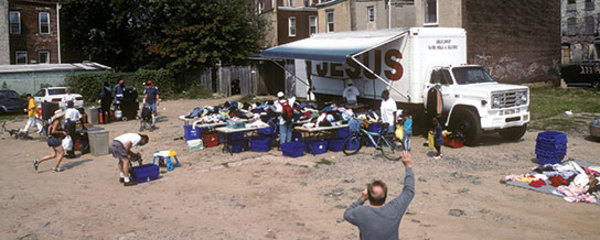Documenting Urban Decay
Photographer Camilo Jose Vergara has been documenting urban decay in the U.S. since the ’70s. […]
Documenting Urban Decay
Photographer Camilo Jose Vergara has been documenting urban decay in the U.S. since the ’70s. […]

Photographer Camilo Jose Vergara has been documenting urban decay in the U.S. since the ’70s. On his website, this Chilean native tells the somewhat Dickensian tale of two troubled cities–Camden, New Jersey and Richmond, California–through time-lapse photographs of specific corners, houses, people, and trees, watching them crumble, disappear and, sometimes, get put back together again. But what’s most unique about the site is the arrangement of the images, which form a revolutionary sort of digital map.
“Before there even were websites’ used to think of how spider webs have a center, with lines that circle around it,” says Vergara, 62. “What if you cover a city, where all these intersections point from where you photograph, and you continue doing this over time? You’ve captured the life of the city.”
Vergara began shooting Richmond in 2005, when he linked with sponsors the Ford Foundation and Rutgers University to launch Invincible Cities, but he’s been documenting Camden since the tumultuous 1970s. “You can understand how the Bronx, with its big buildings, got out of control–a tenant on the fifth floor of a huge apartment building has no [power],” he says. “But, in Camden, it was individual homes. You figured there they had some control, but it just happened the same way.”
With seven published works, including 1999’s, American Ruins and 2005’s How the Other Half Worships, to his credit, Vergara sees Invincible Cities as part of an overarching “Encyclopedia of the American Ghetto,” (“It can be an internet encyclopedia but I’d like to do a book shaped like the Bible,” he explains). Currently, he’s developing a database for Harlem, where he’s lived since the ’70s.
“I’m particularly interested in what Harlem has lost,” he says. “There was very much of what blacks call ‘down-home’ flavor here. Now, people are selling Harlem with that, but what do they see when they get there? The Gap.”

